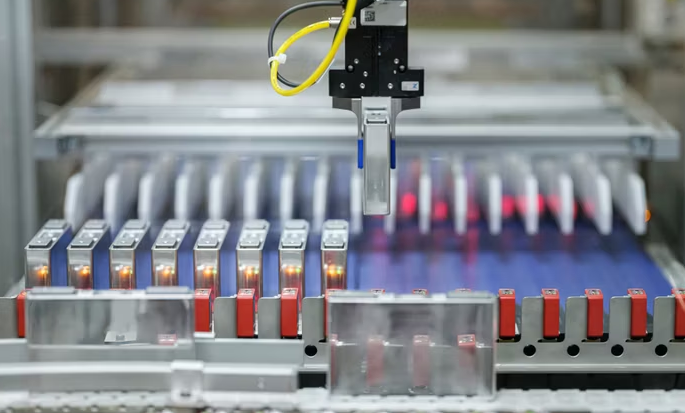
Are solid-state batteries the future of automotive energy storage?
Categories: News Center
Categories: Industry News
Time of issue:2023-10-18 15:30
Currently, many battery researchers are dedicated to developing advanced solid electrolyte materials that can deliver high ionic conductivity while maintaining stability. Materials such as lithium phosphorus oxynitride and sulfides have shown promising potential in enhancing the overall performance of solid-state batteries. Compared to conventional lithium-ion and lithium-polymer batteries, solid-state batteries represent a significant shift in battery technology.
Lithium-ion batteries are bulky, not only taking up excessive space but also adding weight to the vehicle, which negatively impacts its performance and handling. However, solid-state batteries offer an ideal solution to this challenge. With their compact design, they achieve higher energy storage in a smaller footprint by utilizing thin solid electrolytes. Notably, solid-state batteries replace the graphite anode found in lithium-ion cells with lithium metal, enabling even greater energy density.

Solid-state batteries eliminate the need for separate materials between the anode and cathode, as the electrolyte simultaneously serves as both. Additionally, solid-state batteries no longer require the safety-critical housing components necessary to prevent electrolyte leakage in lithium-ion batteries. As a result, solid-state batteries can be streamlined into a more compact design—without compromising their energy-storage capabilities. One of the primary factors currently holding back consumer adoption of electric vehicles is the limited battery range; however, solid-state batteries have the potential to nearly double the driving range of lithium-ion batteries, making electric vehicles an ideal companion for long-distance travel. According to available data, solid-state battery prototypes have already demonstrated the ability to travel approximately 800 to 1,000 kilometers on a single charge.
Solid-state batteries have achieved a significant leap in energy density. Currently, standard lithium-iron phosphate batteries typically offer a single-cell energy density of around 120–140 Wh, while conventional lithium-ion batteries range from 130 to 220 Wh per cell. In contrast, solid-state batteries can deliver an impressive energy density of approximately 300–400 Wh per cell, outperforming today’s battery technologies.
However, considering various factors, a significant number of people still prefer gasoline-powered vehicles due to their short refueling times and greater convenience. One of the main drawbacks of current electric vehicles remains the lengthy charging process—though improvements have been made, few drivers are willing to patiently wait for hours when embarking on long-distance trips. Still, solid-state batteries hold the promise of completely eliminating this issue altogether. Compared to lithium-ion batteries, solid-state batteries can significantly reduce charging time. According to recent advancements, a typical solid-state battery can charge from zero to 80% capacity in as little as 15 minutes. This breakthrough marks a major step forward in narrowing the gap between electric vehicles and internal-combustion engine cars in terms of refueling or recharging time.
Solid-state batteries can significantly reduce fire risks. In contrast, solid-state batteries are inherently safer due to their use of solid electrolytes, eliminating the risks associated with liquid leakage. Additionally, they help mitigate safety concerns related to lithium dendrite formation during charging and discharging processes. Some advanced solid-state batteries can still retain up to 90% of their capacity even after undergoing 5,000 charge cycles. (Source: AI Automotive Manufacturing)




